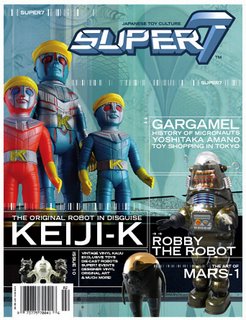 What is Super7? Who is Super7? These are a couple of the questions before me as I started to delve into the vinyl Japanese, monster-laden world of Super7. I first heard about Super 7 sometime last year from the enigmatic purveyor of one of the oldest Japanese toy stores still in existence today: Kimono My House in Emeryville, CA. I pretended like I knew what Yuki was talking about and later looked Super7 up online to see what the fuss was all about. From the website, it looked like all they sold were Japanese vintage vinyl toys. Since I was not a terribly big fan of vinyl toys, I let it go at that. Later I saw a Super7 magazine at another toy store and picked it up. What was this? Why would a toy store have a magazine? I didn’t realize at the time that I had it backwards. Super7 the magazine came first, then the retail store. What is Super7? Is it a magazine or a toy store? It is both and much more, I discovered, when I began to get entwined in the small but hardcore world of some of the most serious toy collectors on the planet.
What is Super7? Who is Super7? These are a couple of the questions before me as I started to delve into the vinyl Japanese, monster-laden world of Super7. I first heard about Super 7 sometime last year from the enigmatic purveyor of one of the oldest Japanese toy stores still in existence today: Kimono My House in Emeryville, CA. I pretended like I knew what Yuki was talking about and later looked Super7 up online to see what the fuss was all about. From the website, it looked like all they sold were Japanese vintage vinyl toys. Since I was not a terribly big fan of vinyl toys, I let it go at that. Later I saw a Super7 magazine at another toy store and picked it up. What was this? Why would a toy store have a magazine? I didn’t realize at the time that I had it backwards. Super7 the magazine came first, then the retail store. What is Super7? Is it a magazine or a toy store? It is both and much more, I discovered, when I began to get entwined in the small but hardcore world of some of the most serious toy collectors on the planet.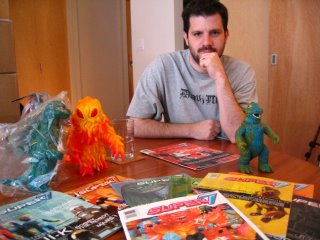 Super7 was born during an interesting collaboration on the book titled: So Crazy Japanese Toys written by Jimbo Matison and Rodney Alan Greenblat. Jimbo called on his longtime friends Brian Flynn and Mark Nagata to provide some of the toys to be photographed for the book. Both Brian and Mark are serious, hardcore collectors having some of the largest and most complete collections of vintage vinyl Japanese toys on the planet. Mark in fact, is credited with the largest Ultraman collection in the world! During the collaboration on the book, Mark thought it would be cool to create a ‘zine based on vintage vinyl Japanese toys. He approached Brian with the idea and it resonated as it was a throwback to Brian’s earlier skate-punk days when a ‘zine was black and white photocopies folded in half, stapled together and passed out for free at parties. Jimbo thought it was a great idea but persuaded them to go all out if they were going to do it at all: make a real, color magazine with professional layouts and awesome toy photography. Why not? Brian had everything they needed from his successful design studio, Hybrid Design . Essentially it would cost them only the paper and ink it was printed on. Thus Super7 Magazine was born.
Super7 was born during an interesting collaboration on the book titled: So Crazy Japanese Toys written by Jimbo Matison and Rodney Alan Greenblat. Jimbo called on his longtime friends Brian Flynn and Mark Nagata to provide some of the toys to be photographed for the book. Both Brian and Mark are serious, hardcore collectors having some of the largest and most complete collections of vintage vinyl Japanese toys on the planet. Mark in fact, is credited with the largest Ultraman collection in the world! During the collaboration on the book, Mark thought it would be cool to create a ‘zine based on vintage vinyl Japanese toys. He approached Brian with the idea and it resonated as it was a throwback to Brian’s earlier skate-punk days when a ‘zine was black and white photocopies folded in half, stapled together and passed out for free at parties. Jimbo thought it was a great idea but persuaded them to go all out if they were going to do it at all: make a real, color magazine with professional layouts and awesome toy photography. Why not? Brian had everything they needed from his successful design studio, Hybrid Design . Essentially it would cost them only the paper and ink it was printed on. Thus Super7 Magazine was born. Brian originally wanted to name the magazine Super1 which is a favorite Kaman Rider character. Mark liked the idea, but wanted a different number. The number 7 sounded good as it is a very auspicious number: Lucky number 7, Ultra 7, 7 Samurai, etc. The number 7 also represented the most popular Japanese characters in the United States:
Brian originally wanted to name the magazine Super1 which is a favorite Kaman Rider character. Mark liked the idea, but wanted a different number. The number 7 sounded good as it is a very auspicious number: Lucky number 7, Ultra 7, 7 Samurai, etc. The number 7 also represented the most popular Japanese characters in the United States:1. Ultraman
2. Godzilla
3. Mazinger
4. Kamen Rider
5. T-28
6. Kikaider
7. Astroboy
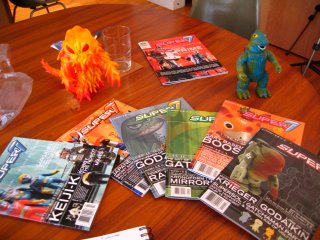 Super7 magazine started as a vintage Japanese toy-centric publication, but it’s now focused on Toys, Art & Design. The main focus is still on vintage toys, but the scope has broadened to cover toy-inspired art and design as well. Before Super7, if you wanted to read about Japanese toys or especially vintage Japanese toys, you had to either read Japanese or get someone to translate for you.
Super7 magazine started as a vintage Japanese toy-centric publication, but it’s now focused on Toys, Art & Design. The main focus is still on vintage toys, but the scope has broadened to cover toy-inspired art and design as well. Before Super7, if you wanted to read about Japanese toys or especially vintage Japanese toys, you had to either read Japanese or get someone to translate for you.The articles in Super7 magazine are not based on current toy news or simply a catalog of upcoming toys, they are really focused on the history of some very specific and beloved Japanese characters and toy lines. I would even go as far as to say that the earlier issues of Super7 were a photo-journalistic toy encyclopedia of sorts. The first issue of Super7 magazine contained very informative articles on things like the rarity and values of Jumbo Machinders which are highly collectible giant (2-3 feet tall) plastic incarnations of your favorite Japanese robots such as Raideen, Getter Robot, etc.
What the hell are Jumbo Machinders you ask?? Who collects those? You need to understand that in the earlier days, Super7 magazine readers were hardcore niche toy collectors. While you and I may collect Star Wars, Marvel Legends, G.I. Joe, etc., these guys usually only collect Japanese toys and more than that, only rare, vintage Japanese toys. Were talking about toys that are very rare and very expensive. Were talking about thousands, sometimes tens of thousands of dollars for really rare toys. Some of the toys Super7 writes about such as the Garada K7 Jumbo Machinder are really, really rare. I mean like only one known to exist in the world!
 Super7 founders Mark and Brian like to have very thorough and very complete articles on everything they cover. For example, if they do an article on a toy line or a specific character, it doesn’t go to press unless they have examples of every version, model, color, variation, etc. It was easier in the early issues, because Mark and Brian owned all the toys themselves. The article on Mark’s Kikaider collection for example has examples of every Kikaider vintage vinyl toy produced in the 60’s and 70’s. A handy checklist is also provided just in case you want to compare it to your own collection. Likewise, Mark’s article on vintage vinyl Ultraman toys reads more like a photo-essay for an auction at Christie’s. It’s that technical, detailed and thorough. I have to say that I was really impressed by the article on the First Godzilla by Brian Flynn and Mike Johnson. Brian displays and compares every single version, model, color variation, tail variation that was produced in the 60’s and 70’s. These guys are hardcore!
Super7 founders Mark and Brian like to have very thorough and very complete articles on everything they cover. For example, if they do an article on a toy line or a specific character, it doesn’t go to press unless they have examples of every version, model, color, variation, etc. It was easier in the early issues, because Mark and Brian owned all the toys themselves. The article on Mark’s Kikaider collection for example has examples of every Kikaider vintage vinyl toy produced in the 60’s and 70’s. A handy checklist is also provided just in case you want to compare it to your own collection. Likewise, Mark’s article on vintage vinyl Ultraman toys reads more like a photo-essay for an auction at Christie’s. It’s that technical, detailed and thorough. I have to say that I was really impressed by the article on the First Godzilla by Brian Flynn and Mike Johnson. Brian displays and compares every single version, model, color variation, tail variation that was produced in the 60’s and 70’s. These guys are hardcore!Maintaining these kinds of standards does take it’s toll. In order to continue with the kind of depth and research desired for such thorough articles, it’s necessary to have access to complete collections. Many times they will be approached to do an article on this or that, which is great, but inevitably, the question is posed by Mark or Brian: “That’s a cool idea, but do you have all of the toys?” When I told Brian that I collected Armored Core figures, he replied that he would love to do an article on Armored Core. He then asked me if I had all the toys. (what he meant was: do you have every Armored Core toy in every color variation from every manufacturer from every toy line?) I meekly replied that I didn’t. Probably not even close and for a second felt ashamed to even call myself a collector at all.
 You might ask: “Who the hell would buy this kind of magazine?” Interestingly enough, apparently a lot of people would and do – myself included, even though I don’t collect vintage vinyl toys. You see, Mark and Brian first made the magazine for themselves. They wanted to cover what they collected and were passionate about. This wasn’t a money-making scheme to sell millions of magazines to the mainstream public. Super7 started as a magazine for people who were really, really into vintage vinyl. They had no idea if they would even sell one copy.
You might ask: “Who the hell would buy this kind of magazine?” Interestingly enough, apparently a lot of people would and do – myself included, even though I don’t collect vintage vinyl toys. You see, Mark and Brian first made the magazine for themselves. They wanted to cover what they collected and were passionate about. This wasn’t a money-making scheme to sell millions of magazines to the mainstream public. Super7 started as a magazine for people who were really, really into vintage vinyl. They had no idea if they would even sell one copy.Then a funny thing happened: they sent the first issue to several distributors and a nationwide distributor called Ingram picked it up! Super7 was an immediate hit! They sold the first 4,000 copies immediately to stores like Barnes & Noble, Tower Records and the like. The current volume is over double that at about 10,000 copies.
My personal opinion is that you don’t have to be into vintage Japanese vinyl toys or even Japanese toys period to appreciate Super7. When I flip through an issue, I am mesmerized by the luscious photography, interesting layouts, insightful articles and elegant design. Sure part of it is nostalgia, part of it is the uniqueness of the magazine, but to me, it’s just eye candy just to pick up Super7!
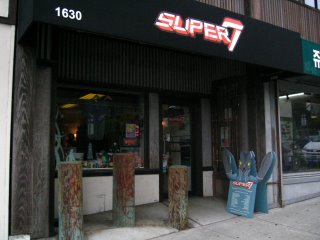 Super7 has become much more than a magazine. They also have a retail store located in San Francisco’s Japantown. However, the retail store is not what you might think. It doesn’t have row upon row of vintage Japanese vinyl toys of every color, variation, style and model. In fact, the vintage toys only account for a small part of the store. The Super7 retail store has more of a “lifestyle” feel to it. It contains a nice selection of cool books related to Japanese pop culture, design and art. The walls themselves feature amazing original artwork from Mark Nagata himself and many other local artists.
Super7 has become much more than a magazine. They also have a retail store located in San Francisco’s Japantown. However, the retail store is not what you might think. It doesn’t have row upon row of vintage Japanese vinyl toys of every color, variation, style and model. In fact, the vintage toys only account for a small part of the store. The Super7 retail store has more of a “lifestyle” feel to it. It contains a nice selection of cool books related to Japanese pop culture, design and art. The walls themselves feature amazing original artwork from Mark Nagata himself and many other local artists.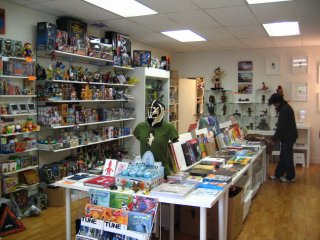
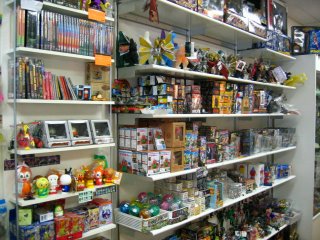
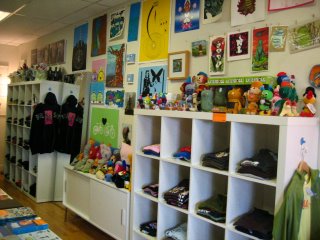
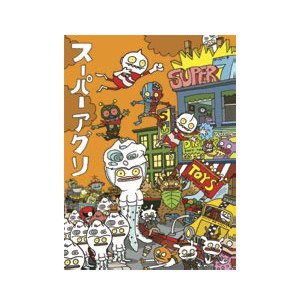
I personally love the original Super7 poster illustrated by uber hip artist David Horvath. The Super7 retail store also hosts a number of events featuring local artists and musicians. I recently attended a book signing by Matt Alt and Robert Duban for their Super#1 Robot book with pictures by Tim Brisko. It was a blast to meet these guys as well as Alen Yen from ToyboxDX which is called the “CNN of the toyworld”.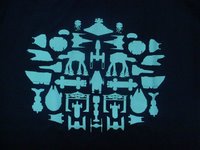 One of my favorite Super7 products would have to be their line of T-shirts featuring ultra-cool fashionista designs by some of the hottest
One of my favorite Super7 products would have to be their line of T-shirts featuring ultra-cool fashionista designs by some of the hottest  artists around. My personal favorites are toy-inspired designs by Brian Flynn himself which include a montage of light blue Star Wars space ship silhouettes or a lime green silhouette of a familiar robot design. These are definitely not your mainstream t-shirts and are sure to be a conversation starter at the next anime convention.
artists around. My personal favorites are toy-inspired designs by Brian Flynn himself which include a montage of light blue Star Wars space ship silhouettes or a lime green silhouette of a familiar robot design. These are definitely not your mainstream t-shirts and are sure to be a conversation starter at the next anime convention.
What is probably most interesting about Super7 is that they produce toys as well. This was something I didn’t know about before. To date, they have probably licensed and created almost 40 toys collaborating with some of the most talented artists in the business today. Brian and Mark’s mantra when thinking about what toys they want to produce always boils down to the simple question: “what would I want on my shelf?” They weren’t out to produce toys to make a lot of money. They didn’t create toys they thought people would want to buy. Mark and Brian produced toys that they wanted themselves.
Super7 offers some of it’s exclusive toys to its magazine subscribers only. They are usually in very small runs of less than 500 pieces and cannot be found anywhere else including the Super7 Store! Mark and Brian license specific vintage molds but do them in different color schemes that have never been released before.
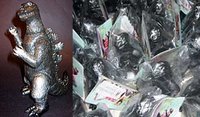 Their first toy was the 1954 Godzilla Vinyl exclusive from Bearmodel / Shono-Kikaku. It’s 9” tall, vinyl, and molded in translucent grey vinyl with black and silver spray accents all over the body. Painted to replicate the underwater, dying Godzilla, this version has never been released in a toy format and is highly collectible. As a bonus, all exclusive Super7 toys come with custom “header cards” designed and illustrated by Mark Nagata. Vintage header cards are collectible in their own right, so it’s cool to see the entire package from Super7. A must for any Godzilla fan!
Their first toy was the 1954 Godzilla Vinyl exclusive from Bearmodel / Shono-Kikaku. It’s 9” tall, vinyl, and molded in translucent grey vinyl with black and silver spray accents all over the body. Painted to replicate the underwater, dying Godzilla, this version has never been released in a toy format and is highly collectible. As a bonus, all exclusive Super7 toys come with custom “header cards” designed and illustrated by Mark Nagata. Vintage header cards are collectible in their own right, so it’s cool to see the entire package from Super7. A must for any Godzilla fan!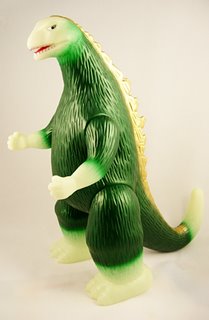 Another stand out Super7 exclusive toy is the Giant Size Godzilla by Marusan. Brian Flynn is a Godzilla fanatic and as was mentioned earlier, has every version of the First Godzilla. The original Marusan Godzilla was just 9” tall, but the giant-size Super7 version is a whopping 15” tall and features a glow-in-the-dark vinyl painted to resemble the rare Hawaii Godzilla paint variant. It comes painted green with gold spines and was limited to only 50 pieces. This super exclusive toy is not cheap either: $180 for the privilege of owning a super rare vinyl toy. With the values of some rare vinyl toys reaching thousands of dollars, perhaps the Super7 exclusive toys are a good investment.
Another stand out Super7 exclusive toy is the Giant Size Godzilla by Marusan. Brian Flynn is a Godzilla fanatic and as was mentioned earlier, has every version of the First Godzilla. The original Marusan Godzilla was just 9” tall, but the giant-size Super7 version is a whopping 15” tall and features a glow-in-the-dark vinyl painted to resemble the rare Hawaii Godzilla paint variant. It comes painted green with gold spines and was limited to only 50 pieces. This super exclusive toy is not cheap either: $180 for the privilege of owning a super rare vinyl toy. With the values of some rare vinyl toys reaching thousands of dollars, perhaps the Super7 exclusive toys are a good investment.
I would say my favorite Super7 toys are the Neo Kaiju Project. You have probably seen the Neo Kaiju light blue eggs at a retail store or online but didn't know what they were all about. Sometimes knowing the story behind the toy makes them all that more desirable. The Neo Kaiju (New Monster) Project is a collaboration between Super7, Strangeco and five artists: Gary Baseman, Tim Biskup, Seonna Hong, Kathy Staico-Schorr and Todd Schorr.
The concept is pretty unique: get American artists and designers to put their spin on a traditional Japanese monster (kaiju) as well as design a completely new figure. The result is a tongue and cheek nod to the old as well as completely new and unique figures by some of the hottest talent today!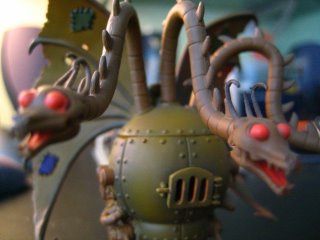
By far my favorite is "Steampunk" by Todd Schorr. His take on the classic three-headed dragon Ghidrah from Godzilla is priceless! Todd's take has his version of Ghidrah made out of cast-iron with a pot-belly stove as his body. I love it. Get it if you can on eBay.
My other favorite Neo Kaiju is "Trilomonk" by Kathy Staico-Schorr (Todd's wife) I swear when I picked up my favorites, I had no idea they were done by husband and wife! Kathy's figure is tongue and cheek hilarity with her version of evolution. You see, Trilomonk is a monkey holding a man's skull with a picture of Darwin on his chest riding an extinct Trilobite. So funny!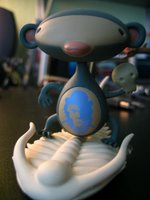 Each Neo Kaiju comes in a light blue transparent egg and thanks to our friends at Super7, they ARE NOT in a blind assortment. Yay! You can actually pick out the ones you want!
Each Neo Kaiju comes in a light blue transparent egg and thanks to our friends at Super7, they ARE NOT in a blind assortment. Yay! You can actually pick out the ones you want!
So there you have it, a glimpse into the world of Super7. It’s a magazine, which appeals to anyone who likes any kind of toys and cool pictures. It’s a retail store which combines toys, books, clothing, artwork and events for the ultra-hip and geek in all of us. It’s a toy line, which produces toys that you would want to put up on your shelf. Super7 is all of these things and I dare say it’s the start of a cross-pollinating, mega brand with a potentially ironic main stream future ahead!
Start your exploration of Super7 by subcribing to their awesome magazine! 
Check out the Super7 Magazine website!
Check out the Super7 Online Store!
the Super7 Retail Store is located at 1630 Post Street, San Francisco, California in the historic Japantown.
Editor’s Note: Mark Nagata is one of the Founders of Super7, but has left the company to pursue his own interests and spend more time with his family. Mark is a successful commercial artist in his own right and we wish him well and are excited to learn about his new ventures! 


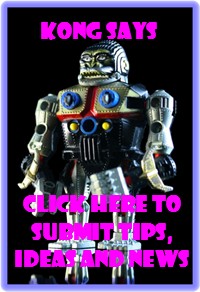






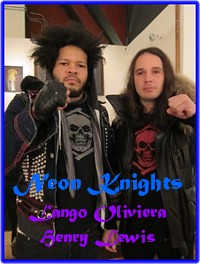
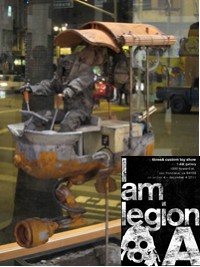
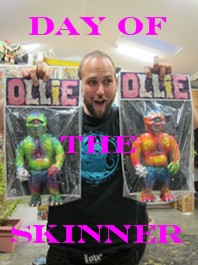

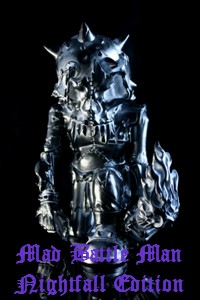


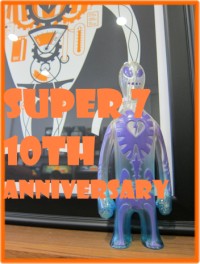
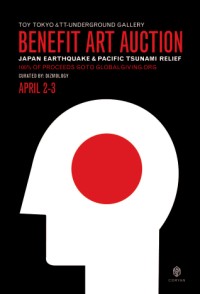

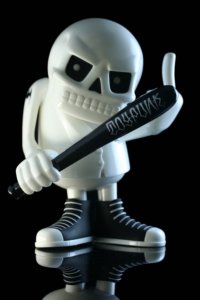
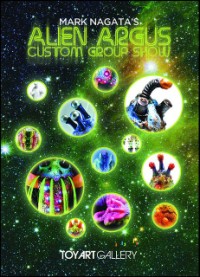
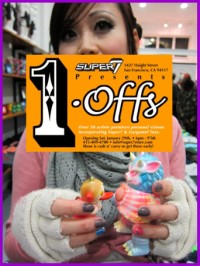

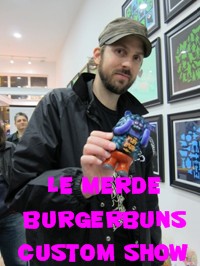

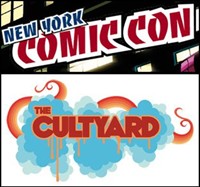




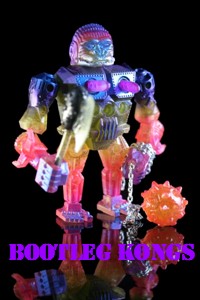
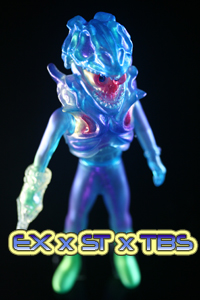

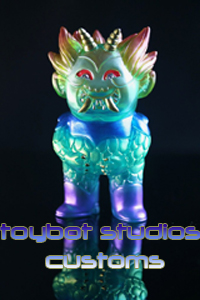


























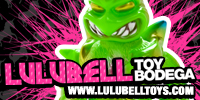






































No comments:
Post a Comment